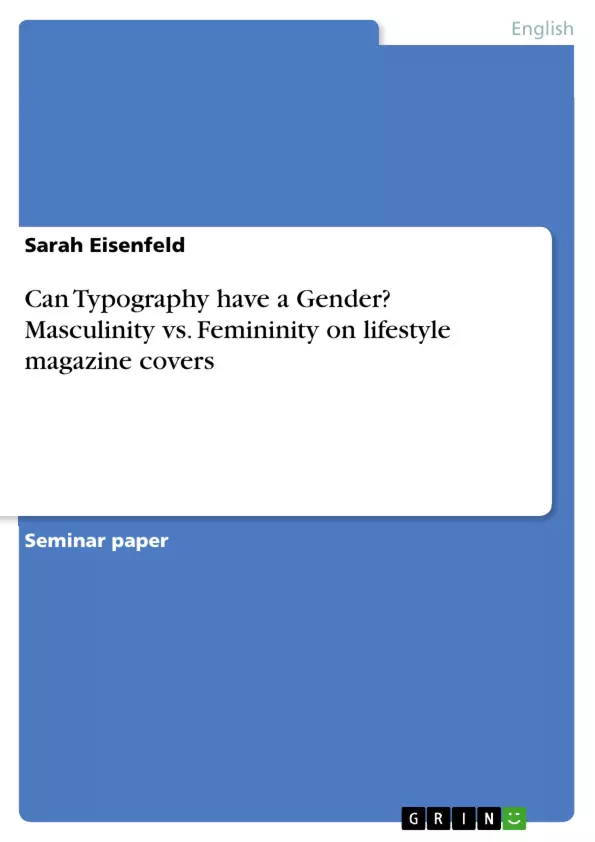The aim of this paper is to analyze and describe the typography, which is employed on the lifestyle magazine covers that seems to characterize and represent the ideologies of gender roles. The material of the study will be two title giants, the Women’s Health and its male equivalent Men’s Health. Different components of the two cover’s typography and their representation of gender will be examined and compared. The covers will be analyzed using principles of the typographic communication theory by Jürgen Spitzmüller and branding to discuss the important typographic variants. Different components of typography will be examined to see whether or not typography plays a part in conveying gender roles, which would then have societal implications. If the typography on the cover is the same for the Women’s Health as for the Men’s Health and whether it represents gender ideologies will be the vital question of this paper.
In the course of digital mediazation, scriptural-graphic communication has become an everyday practice, and typography has been a fixed part of companies‘ corporate identity serving as a tool within written communication. Especially, in lifestyle magazines, the choice of typography as an identity-building stylistic element that is not to be underestimated. The digitization allows for more choice and control of how the consumer’s text looks. Typography produced for magazine covers exists so that the reader can extract the meaning of the text in an efficient and effortless manner. However, from a sociolinguistic perspective, variations on the graphical level as well as on the social relevance of typography, can be viewed as a neglected research topic. Usually, research concerned with components of typography focuses on a semiotic point of view.
Table of Contents
- INTRODUCTION
- TYPOGRAPHY AND ITS SOCIAL RELEVANCE.
- METHODOLOGICAL APPROACH
- DATA.
- PRESENTATION OF DATA FOLLOWING STÖCKL'S MODEL
- DATA ANALYSIS, INTERPRETATION AND DISCUSSION.
- Analysis Women's Health.
- Analysis Men's Health..
- INTERPRETATION OF DATA.
- DISCUSSION OF DATA..
- CONCLUSION
Objectives and Key Themes
This paper aims to analyze and describe the typography employed on lifestyle magazine covers, specifically the Women's Health and Men's Health titles. The study investigates how typographic elements contribute to the construction and representation of gender ideologies. By comparing the covers, the research seeks to determine whether typography plays a role in conveying gender roles and if the visual presentation of these magazines reflects underlying societal expectations.
- The role of typography in constructing gender ideologies
- The impact of typographic elements on the perception of femininity and masculinity
- The relationship between typography and brand identity in lifestyle magazines
- The social relevance of typographic choices and their potential implications
- The analysis of typographic variations and their contribution to gender representation
Chapter Summaries
- The introductory chapter provides background information on the role of lifestyle magazines in shaping gender ideologies and highlights the importance of typography as a visual element that contributes to the construction of meaning. It discusses the significance of analyzing magazine covers as a key platform for understanding gender representations.
- This chapter explores the social relevance of typography and its diverse meanings. It discusses the ambiguity of the term "typography" and presents different perspectives on its application, drawing upon the work of Spitzmüller and Rautenberg.
Keywords
The primary focus of this paper lies in the intersection of typography, gender, and lifestyle magazines. Key themes include the representation of femininity and masculinity, the analysis of typographic elements, and the exploration of branding strategies in visual communication. This research investigates how typography can contribute to the construction of gender ideologies and highlights the social implications of visual design choices in print media.
- Quote paper
- Sarah Eisenfeld (Author), 2019, Can Typography have a Gender? Masculinity vs. Femininity on lifestyle magazine covers, Munich, GRIN Verlag, https://www.grin.com/document/538694



